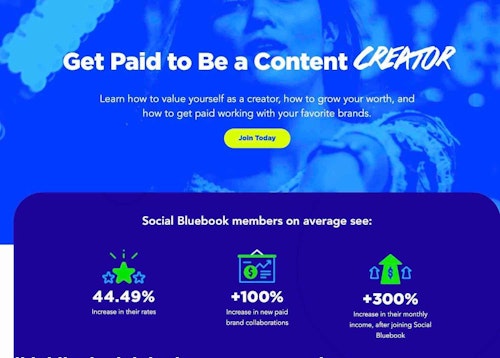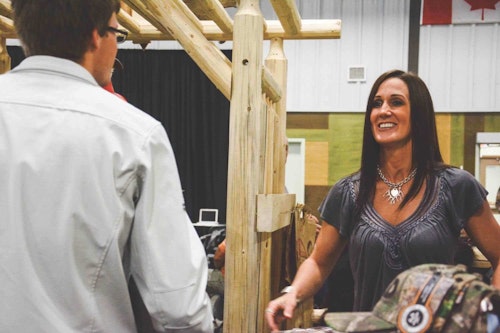Influencers — this simple noun causes eye rolls and slow head nods from people in the hunting industry. Either you love ‘em, or think it is a game that many play poorly. And both responses are correct.
The outdoor industry has always had influencers — we just didn’t call them that in 2005 when Michael Waddell showed you all the cool gear used on his last trip, or Melissa Bachman gave proof of what worked on her last hunt. They were just sharing naturally; besides, in 2005 we were still showing pictures of our food on Twitter.
Suddenly, the power of an individual, with a certain following, and sharing a certain person/place/thing, helped move follower counts, visits or sales. Was it a fluke? Is this legit or all smoke and mirrors? It seems all a company had to do was find the right person (or social media account) and exchange goods (money) for services (postings).
We all know it is never that simple. This exchange can go south quickly without proper communication, mutual respect, and a good contract.
Should You Work With An Influencer?
The first question to ask your brand, your company and yourself: Is working with influencers important to you? This could be a resounding “Yes!” But if you’re unsure, let’s go over a few items.
Do you have staff to help manage the business-influencer relationship? It takes time and energy to find the right influencer, interview them, negotiate, draw up a contract and then watch their execution to provide feedback. It is very similar to herding cats. If you’re simply looking for a “one-off” deal, that’s fine. But if you are seeking longer-term partnership, expect to put energy plus time into it.
What is your budget? Influencers need to be paid for their time and work. It is a simple formula of they provide a service, and therefore should be paid. I am firm in this: no gift cards are given, no “in-kind products” are provided, and yes, both parties will report this on their taxes.
Companies should ask for W2 forms when invoices are given, and that triggers a 1099 form at the beginning of the tax year. Influencers have a business, just like you, so treat it as such.
Do you respect the work of an influencer? This ties into the question above – if you don’t respect the influencer world . . . if you think it is a hustler’s game, then don’t get into it. You will get out of it what you put into it. And if all you put into it is negativity, what do you think is going to happen?
You must have an open mind when working with influencers. If you’ve been burned in the past by poor negotiation or bad performance, then use those lessons to move forward. But also, you don’t HAVE to work with influencers. It may seem like “everyone else is doing it.” It may seem all your competitors are throwing money at influencer marketing – or is that what they want you to think? Remember, perception is reality and that is played out very well on social media.
Do you know what you want that influencer to accomplish during your time together? Have a plan and don’t expect them to come up with the plan for you. Do you expect them to move sales? Do you just want to raise awareness? Tell them how many videos, posts, and stories you want monthly. BE. SPECIFIC. The more specific you are, the better the results.

So, You Had a Bad Influencer Experience
The influencer-brand relationship is dynamic. Much like a marriage, this relationship must be built on mutual respect to succeed. If the influencer is just taking your money, but doesn’t really care about your product, well, that should raise flags. And yes, those people exist.
It is your job to flush out their intentions. Is the potential influencer selective in their dealings? Do they “flop” from one bow company to another? When researching potential influencers, one of my clients insists the influencer already follows their social media accounts. It shows they are already aware of the business. Bonus points are given for tagging the company in posts and/or messaging them from time to time. In fact, the tags and messages are how we begin our influencer search.
You already know this, but it is worth repeating: The best influencers are ones who are already using your product, aware of your brand, and are excited to grow that relationship. If you’re a new company with a new product, don’t fear because everyone has to start somewhere. The key is to find one or two zealots who are willing to grow with you.
Let’s say you had a failed partnership with an influencer; how was this “deal” structured? Was this a paid gig or did you just give them product and ask for in-kind return? I’m here to tell you: It may work in the beginning, but not paying cash for the service you desire can turn around and bite you.
I know that many companies with products gladly hand out their goods to whomever will share a photo of them using it in a treestand or in the field. Here’s the deal: What you value that product as — and what the influencer values that product as — are two separate values. If you give someone a $1,000 compound, how do you know that you’re getting $1,000 of posts in return? It is subjective and someone is usually left feeling shorted. Your product has an actual “Manufacturer’s Suggested Retail” whereas an influencer has no such thing for their posts.
In the past, I’ve recommended Social Bluebook to influencers trying to figure out what exactly their posts are worth — it provides a grading scale and gives real dollar amounts for posts, videos, etc. However, this software is not taking into consideration the knowledge that influencer has garnered. Keep in mind that how many followers or likes a person has doesn’t necessarily equate to their knowledge base or authenticity.
The social media world separates influencers in multiple categories: Mega/Celebrity - 100k followers and up; Macro – 25k-100k; Micro – 5k-25k; and Nano – less than 5k (see sidebar). The best engagements are usually in the Micro and Nano category, but the best reach is in the Mega and Macro category. I’ve found it desirable to have a mix of influencers in each category.

The Influencer Relationship
Melissa Bachman, host of Winchester Deadly Passion on Sportsman Channel, shares her experience working with companies on an influencer partnership level. “One thing I’ve found that is helpful to both the business and the influencer to have a very specific set of requirements and expectations,” Bachman said. “This way both parties know what to expect, and there is no question of what work or posts need to be done and when. I find it helpful to spread the content out over the times that make sense, and then put dates to the deliverables, too. Of course, this can be tweaked as needed. From an influencer standpoint, I’m a firm believer in over-delivering, but the main thing everyone needs to know up front are the expectations on both sides. This way both parties walk away feeling positive and happy.”
Besides immediately establishing expectations, many of my clients request a short-term “trial” agreement of 3 months. During that time, we’ll monitor their posts, engagement and how they were to work with, overall. Then, we’ll consider longer term agreements for the future. Begin small – you can always go up.
Finally, the contract is the last but extremely important piece to this plan working well. A contract is good only if the two parties follow it . . . but this is where you can provide that structure Bachman references. Make sure to add the expected fees, dates of completion and payment terms.
One last bit of contract advice is to add a cancellation clause. For contracts shorter than 90 days, this may be unnecessary, but for those 6 months and longer, a cancellation clause comes in handy. I’ve had experiences where it was obvious early on that an influencer was not going to fulfill their end of the agreement. A cancellation clause with a short notification window (say less than 30 days) can avoid these pitfalls. Have your lawyer advise you on contract wording.

Measuring ROI
How do you put a Return on Investment (ROI) on an influencer program? How do you determine its success? It can be difficult to tag a dollar amount or fit it into an Excel spreadsheet for evaluation — although we all try! With my clients, we use the intangibles to determine success:
- If the client shared an influencer’s post to their account, how well did it perform?
- How are people responding to that influencer’s posts? Are they engaging at all? Are they just “posting and ghosting?”
- How creative are they? Are they willing to take chances?
- When asked to provide specific content, is there push back? Or willingness to complete to task?
- If there is a promo code, how often did the influencer push it? How well did it perform?
- Did the influencer go above and beyond their contract?
- When feedback was given, how was it received? And did they follow through?
If negative “checks” are given to most of the intangibles above, you have your answer on the success of that influencer partnership.
Final Thoughts
Influencers, just like any other marketing strategy, don’t have to be used by your archery shop. You may find influencer marketing is not a good fit for your product or brand; perhaps your time and money is better spent with SEO development or email marketing. Only you can make that decision.
Sidebar: Effective Female Influencers
The “huntresses” on Instagram get a bad rap. Hear me out. Many fault them for having “Instagram boyfriends” who are behind the camera and only use the ladies for the number of potential “likes” a photo of them drawing back a bow may receive. But why aren’t those same “Instagram boyfriends” in front of the camera with their own channels? My time spent in influencer marketing has shed light on this question.
The guys know that ladies get more likes. Whether you believe the algorithm favors women, or if their followers just really like every piece of their content, it seems women receive more attention on Instagram. But they also must know what they are talking about. Authenticity should rank higher than a cool photo or video. While the cool photo will immediately garner attention, followers will stick around for authentic content.
The guys are afraid of what their friends might think. True story: I had an influencer with roughly 10k likes (nothing to sneeze at!) who was perfect for a client. But when it got down to brass tacks, he told me he wasn’t sure he could do this because of what his friends might think. I thought this was a perfect fit, but he never called me back.
Many guys don’t want to be known as an influencer. For some (male or female) “hawking” products or having an affiliate code shows you have sold out. For men I’ve spoken to, this is a real concern. For ladies, not as much. Interesting, right?
Sidebar: Influencer Categories By the Numbers
- Nano: Under 5k followers. Everyday people with a small, generally more friend-based following. They can be used to create buzz within a very targeted audience.
- Micro: 5k-25k followers. Influencers with a small but dedicated following, covering a niche market. Their content is authentic because they have a close relationship with their audience. They can be more easily paired with a performance-based payment model to drive true accountability and measurable results at scale.
- Macro: 25k-100k followers. A These influencers are more likely to work for a flat fee, be that a monthly payment, or a lump sum for a project. The quality of content takes a big leap compared to Micro with better photography and video as this group has grown with their followers and learned what needs to be done to engage. They could have potentially more involved posts by utilizing Instagram Reels, Lives, Stories etc. However, the engagement rate also decreases compared to Micro.
- Mega/Celebrity: 100k and more followers. Megas specialize in driving high-impact awareness with a very broad reach, which is not as helpful for reaching niche markets. Megas cost more, but the quality of their content is close to that of a creative agency. You can also be more prescriptive with the types of content they produce. These influencers almost always work on a flat-fee model and generally work through talent agencies and managers.







